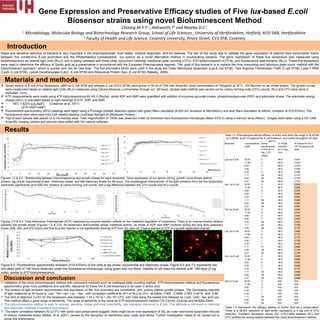1) The study validated the use of five E.coli bioluminescent biosensor strains to rapidly detect and enumerate bacteria as an alternative to traditional plate counting methods.
2) The gene expression patterns of the biosensors, measured through bioluminescence, closely matched the growth curves and correlated strongly with colony forming unit counts.
3) The biosensors were then used to test the efficacy of sorbic acid as a preservative according to European Pharmacopeia standards, demonstrating over 99% light reduction representing a 3 log unit reduction of bacteria.
